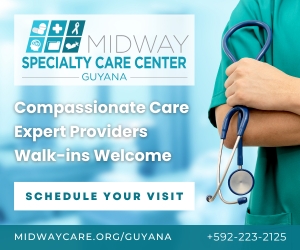Long before the advent of Samsung and iPhone, long before Facebook and Instagram; the philosopher Soren Kierkegaard wrote: “Suppose someone invented an instrument, a convenient little talking tube which, say, could be heard over the whole land…I wonder if the police would not forbid it, fearing that the whole country would become mentally deranged if it were used.” As a consequence of man’s ingenuity, someone has created much more than a “convenient little talking tube” or what we call TV, which has plummeted the world into technological psychosis.
I do not believe, however, that there can ever be the formulation of a vaccine to eradicate this viral pandemic of artificial intelligence nor reverse its side effects as its emer gence has been prophesized more than two centuries ago by the sages of old. In fact, the COVID-19 pandemic has served as a catalyst for the use, and in some instances overdose, of digital technology. The only anxiolytic to mitigate the resulting uneasiness and to ensure mental health and general well-being, amidst this whirlwind of gizmos and gadgets, is the employment of this same technology for the improved health outcomes. Let’s discuss these advances in the realm of Tuberculosis. Tuberculosis (TB), a curable and preventable disease that continues to claim millions of lives each year, disproportionately affects vulnerable populations and hinders socio-economic development. The time to act is now, and the collective commitment to ending TB is stronger than ever. March 24 marks a pivotal moment in the fight against TB as leaders, health organizations, and advocates unite in a campaign entitled “Yes, We Can End TB. ” This groundbreaking initiative is aimed at strengthening partnerships to eradicate TB worldwide. In Guyana, there is energized optimism that TB can be eliminated as a public health concern by 2030. The incidence of tuberculosis declined significantly from 2015, moving from 76 cases per 100,000 in said year to 51 cases per 100,000 in 2024. This progress is the result of bold steps taken by the Ministry of Health to improve prevention, diagnosis and treatment among TB patients.
As a part of a comprehensive approach to tackling TB, prevention messages have been developed that aim to educate the general population about the disease (TB signs, symptoms, risk factors, and modes of transmission). These messages are tailored to reach diverse audiences, including indigenous and migrant populations, to ensure that everyone has access to them. It is hoped that upon dissemination, individuals would be empowered to take proactive steps to protect themselves and their communities from its spread, and thus, stimulate social behaviour changes. As the world awaits with baited breath a new TB vaccine, the Ministry of Health’s Expanded Programme on Immunization (EPI) continues to ensure a high Bacillus Calmette-Guerin (BCG) vaccination coverage resulting in low childhood TB cases.
The national TB programme (NTP) offers several options for TB screening and diagnosis. These include the tuberculin skin test (TST); digital radiology and imaging using artificial intelligence (AI); sputum microscopy; sputum culture; and, molecular testing through the Gene X-pert technology, which is currently available for testing of samples from all 10 regions. Recently, the Ministry of Health added two new 10-color Optic Gene X-pert machines at the National Public Health Reference Laboratory (NPHRL), which can perform drug sensitivity testing (DST) for Isoniazid and four second-line anti-TB medicines. This upgrade is assisting physicians to monitor the effectiveness of the anti-TB drug regimens within the Guyanese context. Adding to the country’s screening capacity are the TB lipoarabinomannan (LAM) antigen rapid/point-of-care test that is currently being rolled out in care and treatment sites to screen for active TB in persons living with HIV (PLHIV); and, the interferon gamma release assay (IGRA), which determines exposure to or prior infection by measuring the immune response to the TB bacilli by the T-lymphocytes in the blood. The latter will join the country’s fleet of TB screening tools for public health facilities in early 2026. In terms of treatment short course, NTP is currently rolling out the newly recommended daily 4-month Rifapentine-Moxifloxacin TB regimen for drug susceptible pulmonary TB cases as per the updated national treatment guidelines. This has reduced the treatment period from 6 months, and thus, is likely to improve treatment compliance. There are also plans to introduce the BPaLm regimen to treat cases of multi-drug-resistant tuberculosis. The duration of treatment using this protocol is 6 months compared to the current regimen of 18 to 20 months. In addition, a new combination therapy, Isoniazid and Rifapentine, was introduced to treat TB infection once a week for 12 weeks. This new treatment is expected to greatly improve the treatment success rates for TB infection.
The collaboration between NTP and the National AIDS Programme Secretariat (NAPS) has led to a decrease in patients with HIV/TB coinfection from 20% in 2015 to 13% in 2024. Approximately 90% of PLHIV, diagnosed in 2024, were initiated on TB prevention treatment. Moreover, over the past few years, the Ministry of Health has extended the Di rectly Observed Therapy Short-course (DOTS) programme to 22 locations nationwide and 5 sites within prisons. Further, the video supported treatment initiative, digital X-ray with AI software and telemedicine platform were introduced as additional technological tools to ensure favourable treatment outcomes and to bridge the coastland-hinterland divide with respect to access to care.
The Ministry of Health is dedicated to supporting underprivileged TB patients, offering a range of services to ensure their well-being, including the referral to mental health services, formation of TB support groups and the provision of nutritious meals and food hampers. These services are designed to help patients cope with the challenges of their illness and alleviate the financial burden on them and their families. The Ministry of Health recognizes the importance of providing such assistance to those in need and remains committed to supporting TB patients throughout their journey to improved health.
Guyana has made significant progress in reducing the number of TB cases in recent years and is well on its way to eradicating this disease as a public health concern by 2030. However, unwavering political commitment towards achieving this goal is crucial. Collaboration and coordination among all stakeholders, including patients, community leaders, DOTS workers, and healthcare professionals, are essential to ensure effective use of our resources.
We grasp the opportunity on this World TB Day to recommit to the mantra: Yes, we can end TB in Guyana and we welcome any partnership that would foster TB elimination in Guyana.













